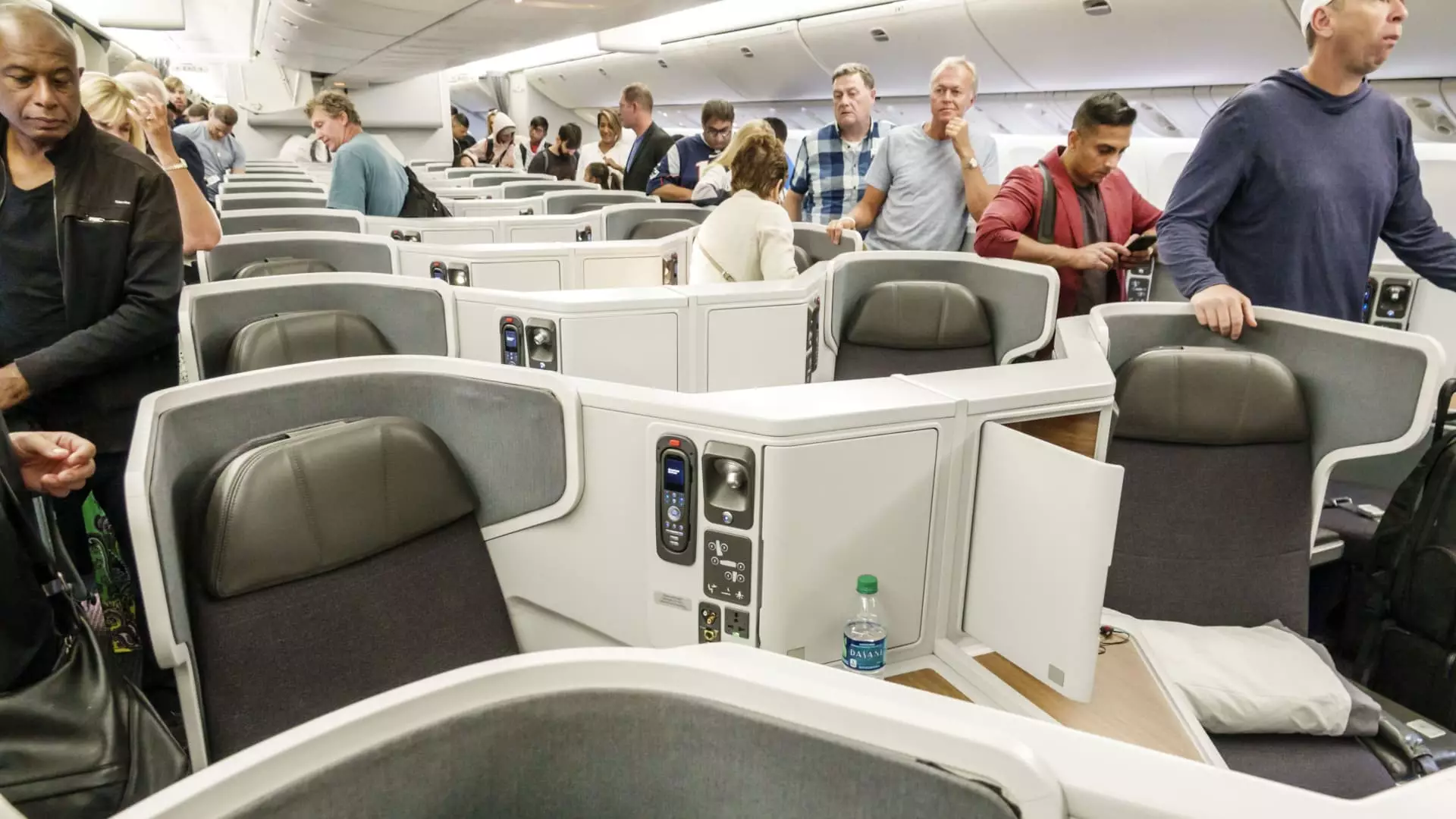The aviation industry is experiencing a notable paradigm shift in passenger preferences, particularly when it comes to cabin seating. The trend, heavily influenced by the pandemic, showcases an increasing willingness among travelers to opt for pricier, more spacious accommodations at the front of the aircraft. As airlines adapt to this evolving landscape, the implications for frequent flyers, revenue generation, and overall customer experience demand a thorough examination.
Following the disruption of the global travel landscape due to COVID-19, a distinct shift in consumer behavior has emerged. Many airline passengers are expressing a strong preference for premium seating options, indicating that the old paradigm of prioritizing cost over comfort has been irrevocably altered. This shift is particularly significant as it complicates the landscape for frequent flyers who once relied on their elite status to secure free upgrades. The competition for such upgrades has intensified, as more travelers seek the comfort of premium seats, making it increasingly challenging for elite status holders to enjoy the perks once easily acquired.
The implications of this trend during peak travel seasons, such as the holiday period, are particularly noteworthy. Airlines expect record high passenger numbers, and with an increasing percentage of those travelers opting for upgraded seating, the dynamics of air travel are shifting dramatically. As airlines ramp up capacity—anticipated to rise slightly in the first quarter of 2025—the competition for premium seats is anticipated to remain fierce.
Airlines are faced with a delicate balancing act: providing sufficient perks to maintain loyalty while simultaneously maximizing revenue. Historically, a significant portion of revenue came from economy class ticket sales; however, the changing dynamics are seeing a shift towards premium cabin pricing, which airlines are eager to capitalize on. The revenue potential associated with premium seating reflects a broader industry trend of airlines reconfiguring their seating arrangements and loyalty programs.
Airlines have been adjusting their loyalty programs in recent years, notably shifting from a model that rewarded distance traveled to one that places greater emphasis on the amount spent. This new approach necessitates that frequent flyers increase their spending in order to achieve elite status. For example, while American Airlines has chosen to maintain its current requirements for the upcoming earning year, others like United Airlines are raising barriers to entry for elite status, illustrating the competitive landscape that continues to evolve.
The evolution of airline seating configurations is evident, with many carriers investing heavily in enhancements to their premium offerings. This movement is not limited to major legacy carriers; even low-cost airlines are recognizing the demand for more comfortable travel experiences. While Delta has noted an extraordinary increase in paid premium seat occupancy—from 12% to nearly 75% of its domestic first-class seats in about 15 years—other airlines, such as JetBlue and Alaska Airlines, are retrofitting their fleets with enticing premium options.
The bullish attitude toward premium cabin upgrades is further exemplified by statements from airline executives, who report experiencing unprecedented demand for these services post-pandemic. With enhancements like sliding doors on flatbed seats and larger screens in business class, airlines are doing everything they can to attract customers willing to pay for an upscale travel experience. Such improvements not only enhance the overall passenger experience but also underscore the industry’s commitment to retaining those customers who prioritize comfort and luxury over minimal travel costs.
As various airlines experiment with their offerings, we can observe a clear trend catering to a new demographic of travelers seeking premium experiences. Southwest Airlines, known for its no-frills approach, is reportedly planning to implement extra-legroom seating while maintaining its hallmark open seating policy. However, CEO Bob Jordan mentions a philosophical departure as younger customers begin to demand a more luxurious experience without a significant overhaul of the seating arrangement.
Ultimately, the future of airline seating appears to hinge on an enduring demand for premium cabin experiences combined with a willingness from airlines to adapt and innovate. As airports become more congested and the competition for coveted seating intensifies, it remains to be seen whether airlines can sustainably meet this new demand while staying profitable.
The transformation of airline seating reflects a broader change in consumer behavior and expectations. With more travelers prioritizing comfort over cost, airlines are tasked with enhancing their offerings and retaining loyal customers without neglecting the need for revenue generation. As the industry adjusts to these shifting dynamics, both passengers and airlines will need to navigate a landscape that increasingly favors those who are willing to invest in a more premium travel experience. The era of frequent flyer perks as a norm may soon give way to a more diverse array of options that cater to a changing clientele, reshaping the future of air travel.

